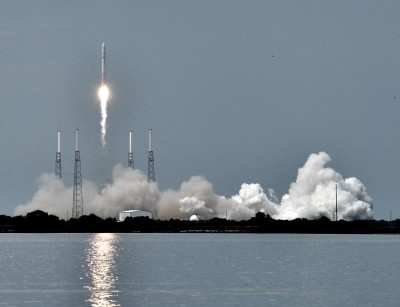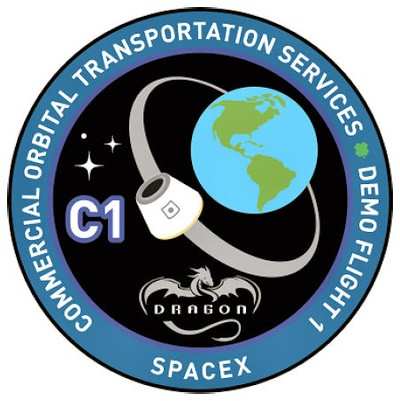Company Plans Orbital And Sub-Orbital Launches From Proposed Facility
The FAA is preparing an Environmental Impact Statement (EIS) to analyze the potential environmental impacts of SpaceX's proposal to launch orbital and suborbital launch vehicles from a private site in Cameron County in southern Texas. The EIS will consider the potential environmental impacts of the Proposed Action and reasonable alternatives, including the No Action Alternative. The successful completion of the environmental review process does not guarantee that the FAA would issue launch licenses and/or experimental permits to SpaceX. The project must also meet all FAA safety, risk, and indemnification requirements.

The Proposed Action as published in the Federal Register is for the FAA to issue launch licenses and/or experimental permits to SpaceX that would allow the company to launch the Falcon 9 (pictured) and Falcon Heavy orbital vertical launch vehicles and a variety of reusable suborbital launch vehicles from a launch site on
privately-owned property in Cameron County, Texas. The Falcon 9 orbital vertical launch vehicle is a medium-lift class launch vehicle with a gross lift-off weight of approximately 1,000,000 pounds (lbs) with a maximum length of 230 feet (ft). The Falcon 9 uses liquid oxygen (LOX) and highly refined kerosene, also known as rocket propellant-1 or refined petroleum-1 (RP-1), as propellants to carry payloads into orbit. The Falcon Heavy is similar to the Falcon 9, except it has an additional two boosters ``strapped on,' each booster being almost identical to the Falcon 9 first stage core. The Falcon Heavy is a heavy
lift class launch vehicle with a gross lift-off weight of approximately 3,400,000 lbs. It has an overall maximum length of approximately 230 ft.
A reusable suborbital launch vehicle could consist of a Falcon 9 Stage 1 tank with a maximum propellant (RP-1 and LOX) load of approximately 6,900 gallons.
As part of the Proposed Action, SpaceX proposes to construct a vertical launch area and a control center area. The proposed vertical launch area site is currently undeveloped and is located directly adjacent to the eastern terminus of Texas State Highway 4 (Boca Chica Boulevard) and approximately 3 miles north of the Mexican border on the Gulf Coast. It is located approximately 5 miles south of Port Isabel and South Padre Island. At the vertical launch area, the new facilities required would include: an integration- and processing-hangar, a launch pad and stand with its associated flame duct, propellant storage and handling areas, a workshop and office area, and a warehouse for parts storage.

The control center area would be located inland to the west of the vertical launch area and would include: A control center building and a payload processing facility; it might also include a launch vehicle preparation hangar and satellite fuels storage. All facilities would be constructed on private land owned or leased by SpaceX. The development of access and supporting utility infrastructure for the vertical launch area and the control center area may occur on lands outside that which is owned or leased by SpaceX.
Operations would consist of up to 12 launches per year with a maximum of two Falcon Heavy launches. All Falcon 9 and Falcon Heavy launches would be expected to have commercial payloads, including satellites or experimental payloads. In addition to standard payloads, the Falcon 9 and Falcon Heavy may also carry a capsule, such as the SpaceX Dragon capsule. All launch trajectories would be to the east over the Gulf of Mexico.
The potential environmental impacts of all proposed construction activities will be analyzed in the EIS, in addition to the impacts from operating the facilities and launching orbital and suborbital launch vehicles.
SpaceX has not commented on how the Texas facility would affect it's launch plans in Florida or California.
 ANN's Daily Aero-Term (05.01.24): Say Altitude
ANN's Daily Aero-Term (05.01.24): Say Altitude ANN's Daily Aero-Linx (05.01.24)
ANN's Daily Aero-Linx (05.01.24) Classic Aero-TV: Korean War Hero Twice Reborn
Classic Aero-TV: Korean War Hero Twice Reborn Airborne 04.29.24: EAA B-25 Rides, Textron 2024, G700 Deliveries
Airborne 04.29.24: EAA B-25 Rides, Textron 2024, G700 Deliveries Airborne Affordable Flyers 05.02.24: Bobby Bailey, SPRG Report Cards, Skydive!
Airborne Affordable Flyers 05.02.24: Bobby Bailey, SPRG Report Cards, Skydive!




